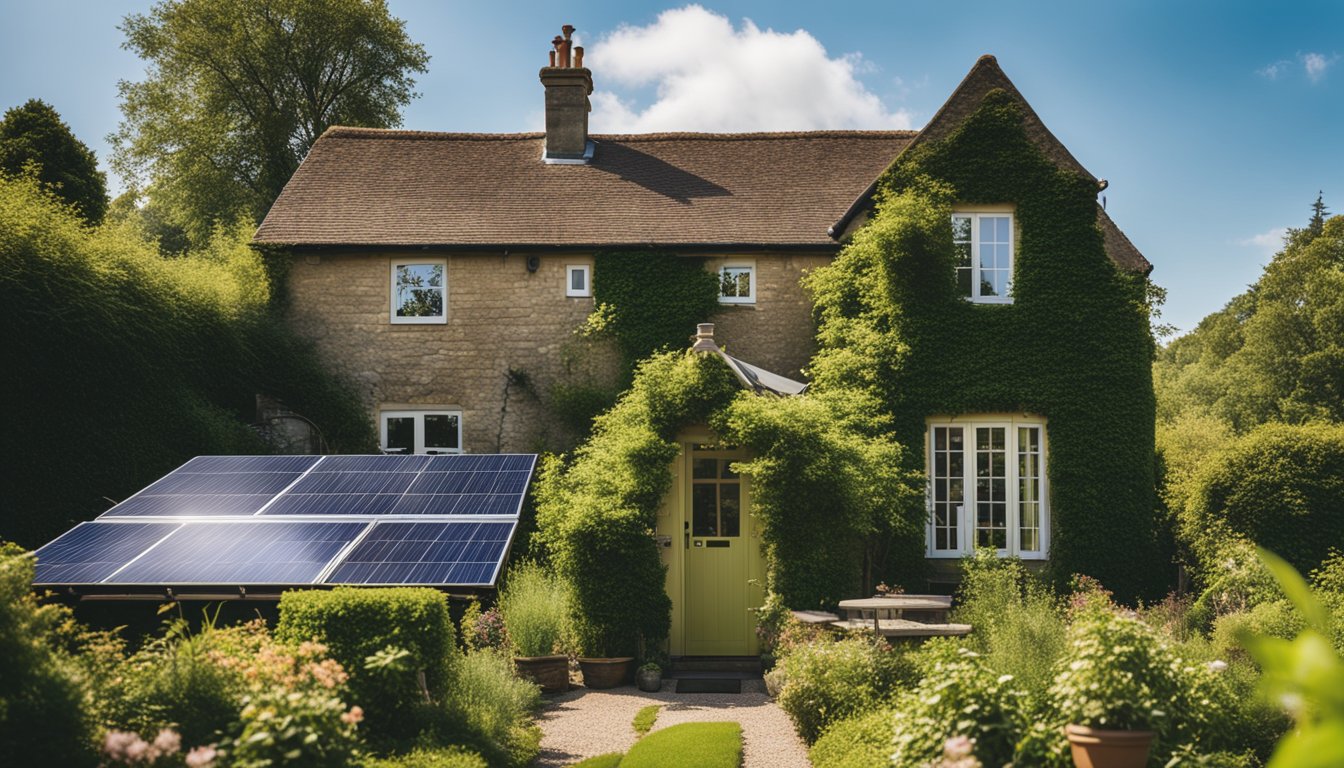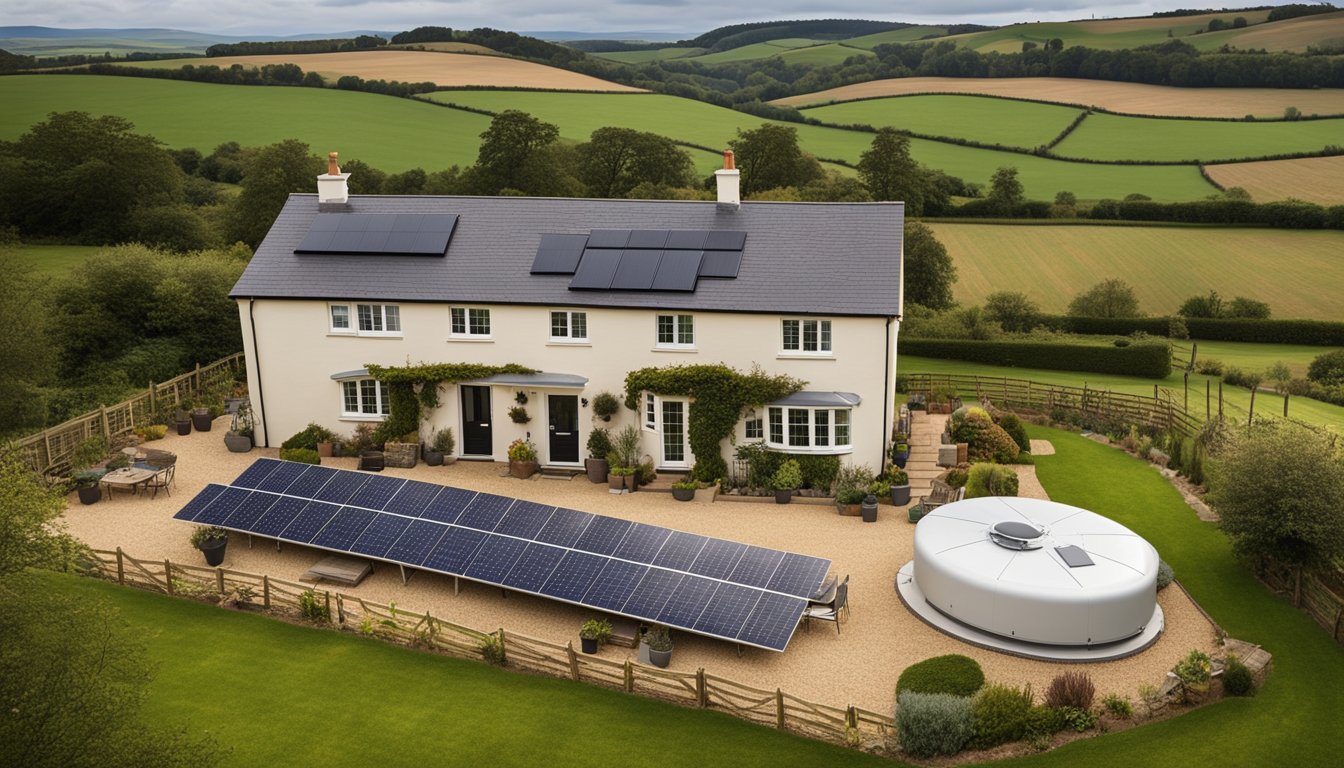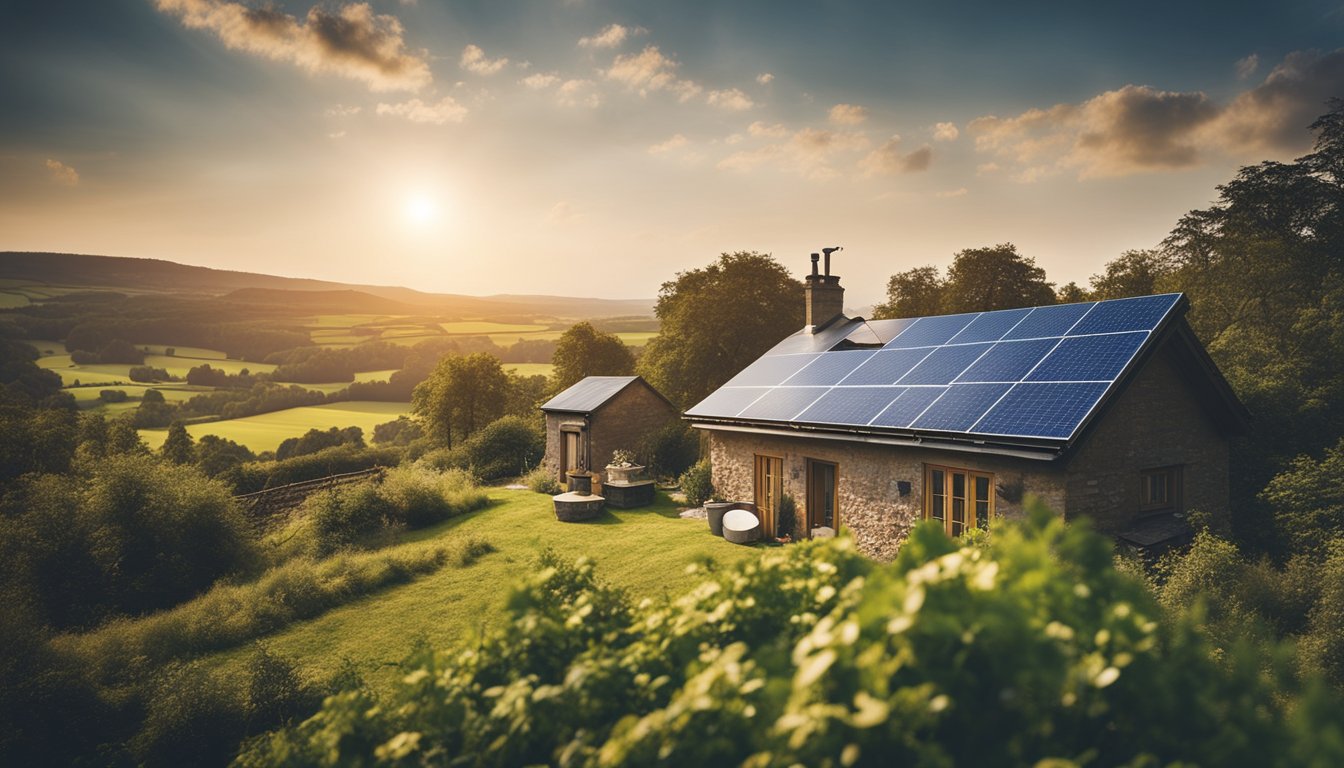Late updated: 29 Dec 2024 11:12
Written by: Oliver Bennett
Innovative Off-Grid Internet Solutions For UK Homes: Enhancing Connectivity
The quest for sustainable living has given rise to a new frontier in internet connectivity: off-grid internet solutions. As we explore the evolving landscape of rural broadband in the UK, we see a growing need for innovative technologies that bypass traditional infrastructures. Off-grid internet offers a pathway to independence from conventional networks, ensuring reliable connectivity even in the most remote locations.

At the heart of this revolution lies a mix of technological innovations such as satellite internet and portable solutions like Starlink Mini. These technologies not only guarantee high-speed internet access but also cater to the unique demands of off-grid living. By embracing renewable energy sources such as solar power, these solutions align with the principles of sustainability, providing robust connectivity without compromising our commitment to the environment.
We're witnessing a transformation in how we stay connected, with significant implications for internet access in areas previously underserved. The drive towards sustainable and independent communication systems heralds a promising future for both off-grid living and rural communities across the UK.
Key Takeaways
- Off-grid internet enables connectivity in remote areas without traditional infrastructure.
- Innovative technologies like satellite and portable solutions support sustainable living.
- Off-grid internet aligns with eco-friendly principles using renewable energy.
Technological Underpinnings of Off-Grid Internet
In the UK, off-grid internet solutions rely on various technological innovations. Satellite internet, fixed wireless, mobile broadband, and renewable energy systems are core components that enable remote connectivity without traditional infrastructure.
Satellite Internet Explained
Satellite internet offers widespread coverage, making it a valuable option in rural areas. By using a satellite dish, it provides connectivity without relying on local ground networks. Providers like Starlink use satellite constellations to deliver consistent connection speeds.
Signal strength and quality depend on the location and satellite coverage. Though satellite broadband can support substantial data usage, latency is an issue compared to other technologies. Advances in low-earth orbit satellites have mitigated some of these delays, improving performance.
Fixed Wireless and Mobile Broadband Infrastructure
Fixed wireless technology utilises radio waves, connecting remote homes via a line of sight to a nearby transmitter. This method is often preferred over satellite due to reduced latency and potentially unlimited data plans. Installing an outdoor antenna is necessary for optimal signal strength.
Mobile broadband through 4G and 5G networks is becoming more common. Cellular networks extend internet access without needing extensive infrastructure. While 5G promises faster speeds and lower latency, coverage is still expanding, with reliance on fibre optic broadband backhaul to support network traffic.
Renewable Energy Systems for Internet Services
Providing continuous power through renewable energy systems is crucial for maintaining off-grid internet services. Solar panels and wind turbines are popular choices, utilising solar energy and wind energy to power essential equipment.
Systems are often designed to integrate solar and wind sources, ensuring a steady energy supply even in variable weather conditions. Storage solutions like batteries capture surplus energy for use during periods without sun or wind, making it feasible for remote locations to keep internet services running uninterrupted.
Practical Considerations for Off-Grid Internet Setup

Transitioning to off-grid internet in the UK demands thoughtful planning to ensure dependable connectivity. We must consider the unique data needs, select suitable coverage solutions, enrich internet experiences in isolated locations, and evaluate both installation and maintenance costs. Such comprehensive evaluation empowers individuals and communities to effectively adapt to an off-grid lifestyle.
Assessing Data Needs and Coverage Options
Understanding our data requirements is central to selecting the right off-grid internet solution. Rural communities, particularly those underserved, might require options like fixed wireless or satellite connections. Providers such as BT, Gigaclear, and TalkTalk offer alternatives catering to various coverage requirements.
Using a broadband checker is beneficial to analyse available options and their respective data plans. These tools help ascertain potential download speeds and recommend coverage suitable for remote areas. Selecting solutions that align with specific data constraints based on household needs, such as streaming or remote work, enhances overall connectivity.
Enhancing Internet Experience in Remote Locations
Living in remote areas presents its own set of connectivity challenges. To enhance our internet experience, it's advantageous to implement mesh networks and signal boosters. These tools help to extend coverage and improve signal strength.
Using an external antenna or amplifier can drastically reduce interference from weather conditions, such as heavy rain or fog that may affect satellite connections. For those using mobile hotspots, choosing a strong signal option can significantly improve reliability. Employing these technologies not only supports an eco-friendly lifestyle but also adapts to the unique needs of an off-grid adventure.
Installation and Maintenance Costs
Installation costs can vary depending on the chosen technology. Satellite services, such as Freedomsat, generally require initial investments for a dish and modem. Fixed wireless solutions might involve costs for mounting an outdoor antenna. Over time, maintenance costs should be factored in to keep systems functional and secure.
Evaluating compatibility with existing equipment, like routers or energy systems, is also wise. Renewable energy sources, such as solar panels, can support these installations, tying into our pursuit of energy independence and self-sufficiency. Calculating these expenses carefully ensures a sustainable internet setup that meets our long-term needs while embracing the off-grid lifestyle.
Frequently Asked Questions

We're diving into what makes off-grid internet viable for UK homes, exploring the effectiveness of satellite services, innovations in connectivity, and solutions for remote areas without cell coverage. We'll also look at options for gaming and setting up your own WiFi router.
What options are available for unlimited Off-Grid Internet in the UK?
In the UK, off-grid areas can access the internet via satellite broadband, fixed wireless, or mesh networks. Providers like Tooway offer satellite connections with competitive speeds. Fixed wireless broadband can also be a reliable choice for unlimited internet, given the right setup.
How effective are satellite Internet services for Off-Grid UK homes?
Satellite internet is highly effective for off-grid homes, providing coverage in remote areas. The service typically depends on a clear line of sight to the satellite, offering speeds comparable to standard broadband. However, latency may be higher than other types of connections.
Can you recommend the best Off-Grid Internet solution for remote gaming?
For gaming, a combination of fixed wireless connections or high-speed satellite services is recommended. Fixed wireless solutions often provide more stable latency, critical for gaming. Ensure the chosen service offers sufficient speed and data allowances.
What are the latest innovations in Off-Grid Internet connectivity for UK residents?
Recent innovations include the development of community-based mesh networks and enhanced satellite technology. Mesh networks enable neighbourhoods to share internet access, while advancements in satellite technology offer improved speeds and reliability.
How can I set up an Off-Grid WiFi router in a UK home?
Setting up an off-grid WiFi router involves connecting it to your satellite, fixed wireless, or mesh network service. Ensure the router is compatible with your chosen service and positioned to maximise signal strength. Follow manufacturer instructions for optimal setup.
What solutions exist for getting Internet in remote UK areas with no cell service?
In areas without cell coverage, satellite broadband remains a primary solution. Mesh networks can also provide connectivity when a group collaborates to share internet resources. Additionally, fixed wireless broadband may be available depending on geographic conditions and infrastructure.
